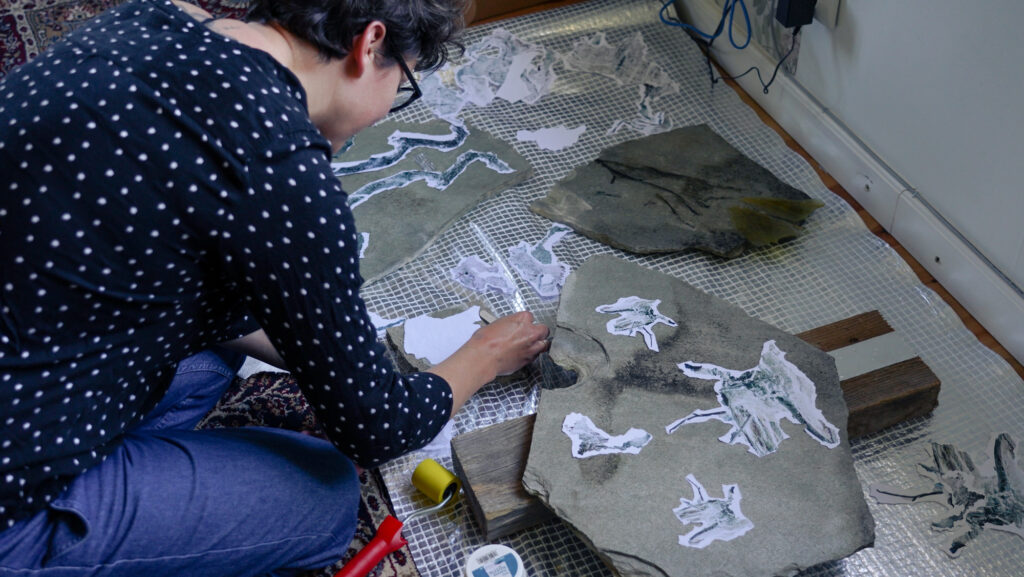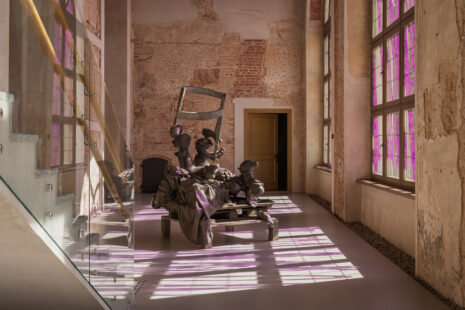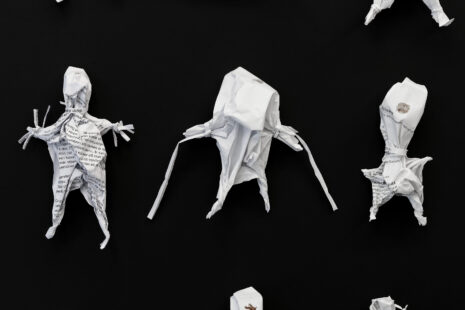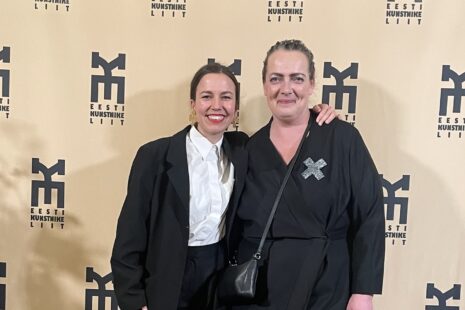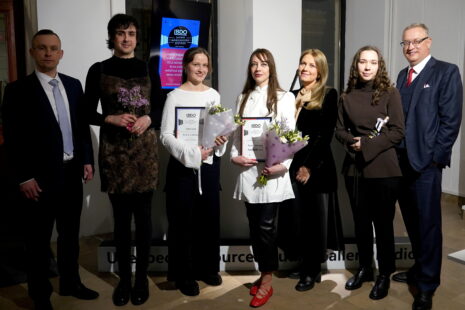Was it your first time in Viinistu or even in Estonia? For how long did you stay here altogether, which were your first impressions?
I have been to various places in Estonia before, I like your country. By coincidence, I went to the Biotoopia conference/art event, which was held exactly in Viinistu last year, so I was a bit familiar with the place. Nevertheless, it was my first artist residency experience. When Viinistu Art Harbour representative Mr Raido asked me beforehand how long I would like to stay, – I thought that 13 days would be enough, – I could not be more wrong. I did not count 2 days off as travelling days, so in the end, it was 11 days fully spent in residency. During our email correspondence, we agreed, that I would create work there. I thought that I could do it in 5 days and the other 5 days I would spend on much-needed relaxation, reading, and some new sketches for my next projects.
Oh my, how naïve of me! I ended up fully focused on the art piece I had to create for the harbour.
I walked the grounds, explored the old industrial buildings, and spent 2 days on Mohni island, where I took a lot of infrared photographs, observed nature, and step by step developed the concept that felt right and relevant to the place. Not to mention, that after my offer to take an easier approach – to lean my installation pieces on some walls – the art patron and owner of the place Mr Jaan Manitski just said: let’s dig them inn, your piece will be the first in an upcoming sculpture park. So that is how it led to a bit of construction process as well. Now I know that 3 weeks should be the minimum time for the residency – to create an art piece for residency and use the time for artistic research and new work as well.
You have said that you live in a lot of solitude, digging into your inner world, reading and researching, walking, or working in the studio. How does this kind of lifestyle match with Viinistu? Which was your daily schedule?
Ouu, it was a bliss! It matched perfectly. I enjoyed every minute. Thanks to the gracious residency opportunity from Mr Jaan Manitski, – I was given a beautiful apartment for me alone, – it helped to focus and work in a peaceful and quiet environment. One of the rooms I converted into my temporary workspace. Every morning I would wake up, make my morning coffee, and have a long breakfast which I love to do as a morning ritual very much. Then I would have a list of tasks and decisions I need to make for each day, to make my work in time to meet my residency deadline. When I am on a ticking clock, I get very organized and disciplined in a way, because I like to move in a steady piece, not make hasty decisions. On some days I realized I have walked 8 km back and forth in just the art harbour area alone.
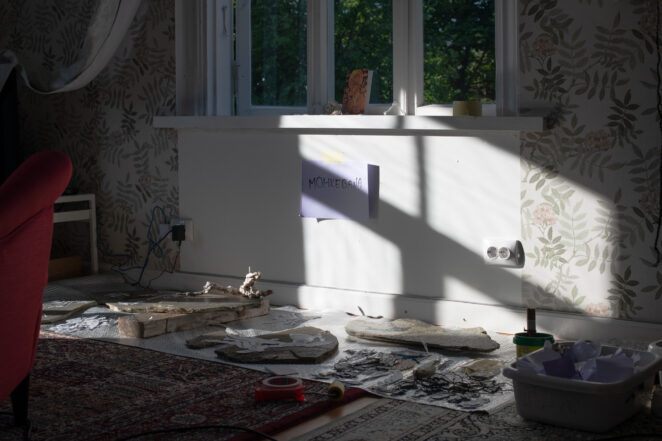
Amongst others, you have been inspired by a philosopher Timothy Morton, anthropologist Ann Tsing and artist Robert Smithson. If and how were their concepts and views reflected in the location of Viinistu? Have you noticed any sign of “hyperobjects” there, for example?
Together with my sense of Viinistu as a place, including its history, and Mohni island exploration – all the writings were reflected in some elements of the location in one way or another. I think in a way I tried to make some kind of order or cartography of the place unknown to me. There were so many threads that I could follow: military impact, fish factory, oyster mushroom factory, laboratory, so many artefacts of past times, people coming to Viinistu in search for relaxation now; art collection, sea.
When I was on Mohni island – just sitting on the rocks, it got me thinking about the concept of time. James Graham Ballard, an English novelist, wrote in his science fiction book “The Overloaded Man” (1967):
Without a sense of time it is difficult to visualize consciousness.
I was attracted to the idea, of how to capture this sense of place through the materiality of objects which has been there for many, many years like trees, lichens and rocks versus human-made. I guess that is what triggered me to notice a huge pile of shattered stones, covered with grey and yellow leeches on art harbour grounds and use them as my canvas. As I learned later – those came from a dismantled swimming pool.
The result of your residency was an outdoor installation called “Mohkebana” that is related to the „Ikebana“, a Japanese art of arranging flowers, its search for balance. Tell us more about it – have you made any ikebanas yourself, what is the philosophy behind that etc?
I would like to master it one day. I find it very challenging to create a composition that is balanced, ethereal and minimalistic at once. It seems easy but always comes down to materiality and the form of objects used. In this case, I was more interested in philosophy and the linguistic sense Ikebana represents, rather than the direct, rational category. It was more about seeking harmony and order, where nature and human-made objects interact.
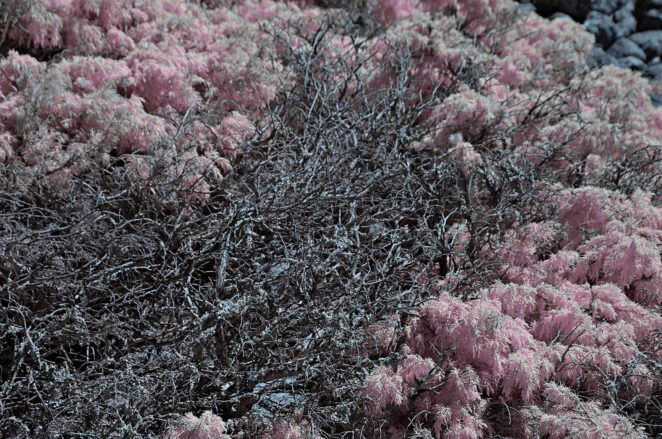
You also spent 24 hours at Mohni island that is called „heaven on earth“, visited by „nuns, pirates, vikings, poets and artists“. Did you feel any kind of special spirituality there? Which kind of materials exactly did you find there to use in your installation?
I was told many tales and stories about the island indeed. It is a very beautiful and remote place to be. I admire the island keeper and his wife, an elderly couple that lives there permanently for many years already, even in winter. They are dependent on supplies delivered to them, but overall this lifestyle in such a remote place is a very rare one to encounter in daily life. I would only wonder how that feels.
During my hike around the island, I stumbled upon various left-behind objects, like slippers, metal objects, and plastic bits and pieces; on a horizon, you can always see huge cargo ships at all times. So I am a bit hesitant to call it „heaven on earth“, but it is a quiet peaceful land in the water to seek inner balance and feel the presence of nature.
The time spent on the island gave me this peaceful state of presence, the impulse for the work and an aesthetic reference to work with – white driftwood.
“Mohkebana” is now left to the discretion of the weather. “Orgatopia” – the winning work of NOBA Award – was also set up with the aim to use ecological materials and not to interrupt the environment. How are these two works connected to each other, are they part of the continuing narrative of your artistic work?
Honestly, I did not think of it in a sort of linear way. It somehow came naturally – to repurpose as much materials as possible from the art harbour area, using what is already there. I knew that my challenge was to work with the vernacular approach – using found objects on site. And that the piece should be made from weatherproof materials – since it will be placed outdoors. Installation was forming as a group of objects that would represent my sense of the landscape with the materials from this landscape and placed back in the same landscape. The decision to work with outdoor exposition also came after we walked the perimeter and realized, that even though there are a lot of buildings and rooms – they are too crowded with historical artefacts and stuff – that displaying installation in this setting – simply would not work and it would be harder or nearly impossible for people to reach without a special tour guide.

Did you manage to visit the exhibition at Viinistu Art Harbour or other places in Estonia? Which were your impressions?
I was lucky to be there when a guided tour day with Mr Jaan Manitski and his son Arthur Manitski took place. I learned that collection has been reorganized by a curator – using a themes approach. That was helpful for me in the early days of my stay as one of starting points for the artwork. I was happy to find the room dedicated to Fantasyscapes.
Have you been to other residencies and how would you compare them to Viinistu?
A few days after my return home from Viinistu, I was honoured to receive an invitation to work in another residency soon in autumn. Viinistu was my first artist residency experience and I was the first artist there – I can only send my gratitude for the apartment itself that allowed me to focus on my creative process. I also want to express great gratitude to the representative Mr Raido, who was very, very caring and helpful, patient and kind with all my questions. Not to mention managing the construction part for the installation. Hospitality and food were as good and tasty as one could dream of. I am internally grateful for this award and opportunity to NOBA!
I can only hope that the Viinistu artist residency grows further and that more contemporary works enhance the place!

